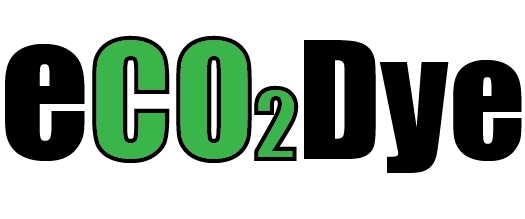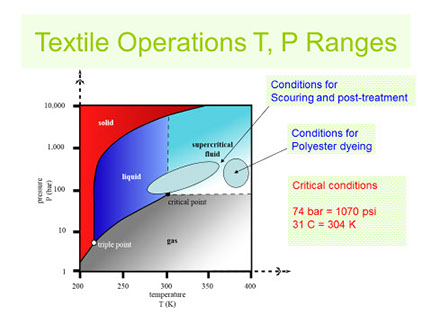


Pre and Post Treatments of Fibers
Post-treatments
Textiles are frequently treated with additives which allow properties of the fabric, for example, to be modified to improve customer liking for the textile or for improving the performance of the textile in machine handling.
eCO2Dye has worked with numerous additives such as silicone oils that can be infused into the textile to improve the “feel or softness” of the textile fabric. We also offer treatments for yarns that reduce the friction of the surface of yarns to enhance the processing of the yarn in knitting and weaving operations.
The Figure below shows the CO2 phase diagram along with the supercritical point and the range of conditions suitable for textile operations.

Pre-Treatments
scCO2 for Scouring : Cleaning of yarns and fabrics done prior to dyeing or printing
Production of yarns and converting these into fabrics by weaving or knitting processes requires use of various oils, waxes, lubricants and other additives to facilitate in the fabrication steps. The processing aids are removed from the textile to obtain high quality dyeing or printing on the textile. Processing aids are used for all textile materials – natural and man-made, though they may differ chemically depending on the material.
Conventionally the above processing aids are removed by washing with water, surfactants, caustic soda, emulsifiers
- Large water use – as much as 40 l/kg textile
- Extracted materials end up in waste water
- Typically >90% of extraneous materials removed
In our work we have shown both in the lab and the pilot scale that scouring is technically viable and amenable to commercialization for natural and man-made textile materials.